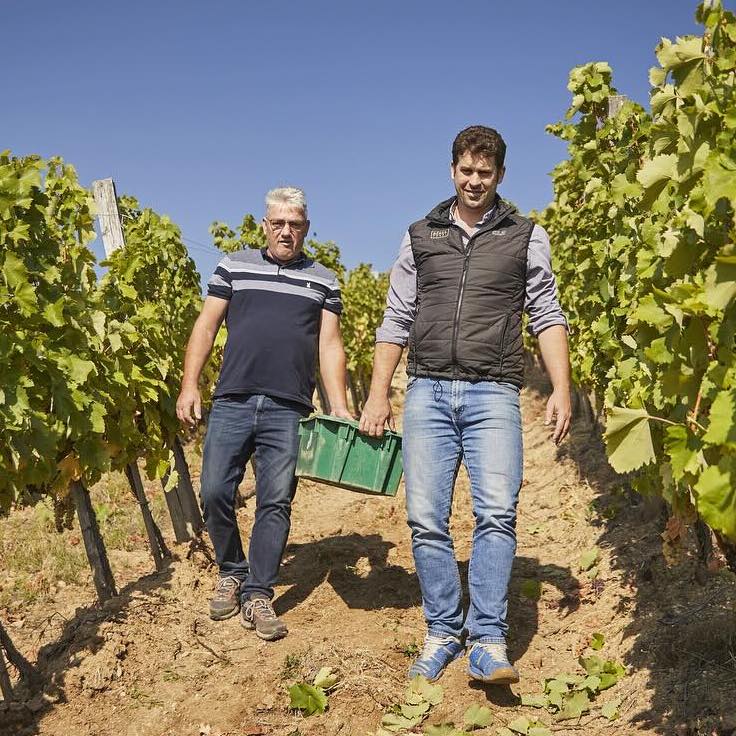International Rosé Day is coming!
Obscure origin
Many calendars insist on 14 August being the International Rosé Day, though it is hard to find evidence. The United States of America – from where almost all days originate from Valentine to Father’s Day, and also wine days, like Cabernet Franc day – has its own national rosé day in June, thus the origin of the August rosé day is even more obscure.
To push sales?
We asked Elizabeth Gabay MW, one of the most important people when talking about rosé, a real rosé expert (so seriously that she has moved to Provence from the United Kingdom, to live in the French „kingdom of rosés…”) France is the biggest consumer of rosés, and still they do not have a rosé day – they don’t need official days to consume a lot. Elizabeth Gabay MW thinks that the reason behind this middle August date can be a push of sales. The last chance to make use of the summer heat to sell more of the fruity, refreshing rosés. “It reminds me of how greeting cards were first launched in America when they thought up all of the special days – mothers’ day, fathers’ day grandmothers’ day. In the 19th century to boost wine glass sales they invented different glasses for different wines” – says the expert on what must be the reasons behind this international day. She added: “I can see the benefit for maybe obscure wines – and may be the chance to focus on odd grapes – but rosé day?”
To read more from Elizabeth Gabay MW, click on her website
Her new book on rosés – Understanding the Pink Wine Revolution – is available from 21 October, but can be pre-ordered now:
3 tips to enjoy rosé from Hungary
No matter how obscure the origin of International Rosé Day is, you can find bright, perfectly clean and enjoyable rosés from all over Hungary. Kékfrankos, the most widely planted black grape of Hungary obviously gives the base for most of the rosé wines, though many winemakers think that it is not an easy job to make fresh, fruity rosé of it. As László Romsics from Csányi Winery says, in some years Kékfrankos grape tends to have a thick skin which might add too much bitterness to the rosé. Indigenous Kadarka is also the source of unique pink refreshment, and of course international varieties like Cabernet, Merlot, Shiraz and Pinot Noir are commonly used. Here you are a handful of nice rosés to prepare to celebrate:
-
Lajvér Rosé Cuvée, Szekszárd wine region
“A drop of California in Szekszárd, in the valley of Lajvér spring” – as they claim about themselves. Lajver Wine Estate is a relatively new winery in Szekszárd wine region, they became quickly wellknown with their easy drinking, mostly screw cap wines. Their wine selections, eg a Kékfrankos Selection showed that Lajvér is capable of great quality wines with great potential as well. Lajvér Rosé Cuvée is made of 90% Medoc and 10% Kékfrankos. Their website is under construction, but you can read more here:
-
Baba Rosé – Panna Rosé, Mór
It’s a funny story: Krisztina Csetvei in Mór called her rosé Baba Rosé in every vintage, and on the label you could find a baby footprint. A game on letters: the word BABA consists of B and A letters, so some labels had a B, others had A. You had to buy two bottles to have the two footprints. (Baba means baby, but it has another meaning in slang: when something is ‘baba’, it’s cool, and Csetvei Rosé was always cool.) However, recently a baby was born in the Csetvei Family, so Baba rosé got a name: the new vintage is called just as the baby: Csetvei Panna Rozé! The wine is made of Kékfrankos from Mór wine region, refreshing, clean and lovely, some experts say it reminds us of strawberry ice cream with basil!
-
Öröm Rosé, Eszterbauer Winery, Szekszárd
‘Öröm’ means ‘Joy’, and thus the label depicts an idyllic scene from a harvest long time ago, the joy of work, the joy of creation, and of course love (there is a happy couple in the black and white photo, and since all labels of Eszterbauer has a story, this one must have one to, but you must visit them to hear the story…). Öröm Rosé achieved a great result at the last rosé panel tasting of VinCE Magazine (market leader in Hungary), it was evaluated the best rosé from Szekszárd with 16.20 scores (out of 20). The rosé is made of Kékfrankos, Merlot, Pinot Noir and Kadarka. Good intensity, great balance, long, fruity finish.
How to enjoy rosé
Finally, since International Rosé Day is or is not from the USA, we can still commemorate it with a truly American film star, and her advice on how to enjoy rosé: Drew Barrymore (owner of Barrymore wines) in Vogue Videos
Comments ( 30 )
-
Trackback: dispo carts
-
Trackback: disposable vapes
-
Trackback: สล็อต ฝากถอน true wallet เว็บตรง 888pg
-
Trackback: เว็บคาสิโนออนไลน์
-
Trackback: Führerschein kaufen
-
Trackback: spin 238
-
Trackback: RICH88 ทดลองเล่นสล็อตออนไลน์
-
Trackback: พัดลมหลังคา
-
Trackback: รับทำวิจัย
-
Trackback: how to collect mushroom spores
-
Trackback: Cartel oil company
-
Trackback: apk online
-
Trackback: link togel
-
Trackback: trustbet
-
Trackback: บาคาร่า
-
Trackback: essentials
-
Trackback: Exosome
-
Trackback: ร้านขายยา
-
Trackback: university
-
Trackback: สั่งเค้ก
-
Trackback: steenslagfolie
-
Trackback: Pragmatic Play Slot ค่ายเกมสล็อต
-
Trackback: 스포츠토토사이트 꿀팁 모음
-
Trackback: รักษาสิว
-
Trackback: tornado vape
-
Trackback: Jaxx Liberty
-
Trackback: Jaxx Liberty
-
Trackback: SLOT NEW เกมสล็อตออกใหม่
Comments are closed.







Trackback: henry usa shotguns